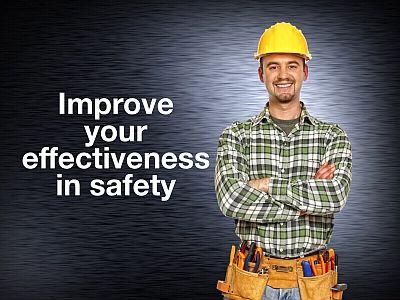Good employees who have special skills and talent take pride in their work and they protect that pride by engaging in safety.
 Without getting into long descriptions, good workplace safety culture is the result of attitudes and personal and corporate values aligning. If apathy in the workplace exists, little care will be given to safety. When the quality of the work is “good enough,” apathy in safety exists. If employees think it's a lousy place to work, then safety will take a back seat. Poor safety attitudes will impede becoming a top performer. That reflects in both safety and financial performance. A broken safety culture will have an impact on overall corporate performance.
Without getting into long descriptions, good workplace safety culture is the result of attitudes and personal and corporate values aligning. If apathy in the workplace exists, little care will be given to safety. When the quality of the work is “good enough,” apathy in safety exists. If employees think it's a lousy place to work, then safety will take a back seat. Poor safety attitudes will impede becoming a top performer. That reflects in both safety and financial performance. A broken safety culture will have an impact on overall corporate performance.
You cannot change the safety culture without addressing the underlying attitudes and values. Attitudes, values and culture drive everything.
A 2013 study states that “when organizations have engaged workers, they are 18 percent more productive than their competitors, 12 percent more profitable, have 22 percent higher-than-average shareholder returns, and have employees who are 57 percent more effective and 87 percent less likely to leave.”
Organizations with confident attitudes combined with a sense of service will outperform mediocre companies. According to the study, better performing companies have more engaged employees. Engaged employees are more productive and try harder.
Some companies are completely satisfied to remain mediocre. They may believe that as long as the doors stay open, that seems to be good enough. As long as everyone has a job, good enough. As long as the company doesn't go belly-up, good enough.
But they will not attract the high-caliber employee, have high engagement rates nor are they likely to finish anywhere near industry-leading safety performance. To do that, you will need to engage three ways to improve the effectiveness of your safety program:
1Get in front of the pack. Mediocre organizations check to see what the others are doing with their safety program and mimic that. One follows the other, right or wrong. Middle-of-the-pack performance comes from doing exactly what everyone else is doing. They are satisfied with sitting in the middle of the pack. They attract middle of the pack kind of people and get middle-of-the-pack ideas at their safety meetings. They also suffer middle-of-the-pack turnover rates, attrition rates and job-satisfaction and engagement rates. Theirs are not organizations that tout quality as one of their guiding principles. You cannot do high-quality work employing average quality safety. Get out in front of the middle-of the pack performers. Be a safety leader.
2Become exceptional at one or two things specifically. Much like “special teams” in sports, the companies having some of the greatest success are those organizations that have become exceptional at a few areas of specialization. They become market-dominant in their respective segments. And because of their high expertise in these few areas, they find themselves becoming more in-demand on those jobs and specialties. When you become exceptional at a few things, you find that employees who want to excel in those particular segments tend to gravitate to the market-leaders. Good employees who have special skills and talent take pride in their work and they protect that pride by engaging in safety. Meticulous employees are also meticulous about their personal safety.
3Use your safety performance as a competitive advantage. Respectable companies don’t want to affiliate with or do business with poor safety performers. Outstanding safety performance guarantees continued business and cash-flow. It also attracts better employees and encourages better performance. OSHA’s SHARP (Safety & Health Achievement Recognition Program) and Canada’s COR (Certificate of Recognition) are becoming commonplace for contractors who want to be able to bid on the high-end contracts. Companies want to do business with reputable contractors and organizations. When you build your reputation with your clients as a solid safety performer, you are also building a reputation as an employer of choice. Solid safety performance attracts better employees and secures better business opportunities. The best place to work should be the safest place to work.
Effective workplaces are those places where employees feel valued, cared for and protected. There are no exceptions to this rule. To attract and retain high-quality people (and customers), you have got to build a workplace that cares for and protects its employees. Engaging in being more effective in safety attracts and retains the best employees doing the best work.

The really good news is that to be outstanding requires your organization to just be one step above your competitors. That should be encouraging news to any organization looking to be the best safety performer in their industry.
Kevin Burns helps safety departments, safety committees, management and front-line supervisors to accelerate safety programs. Through consulting services to create a personalized plan to accelerate safety teamwork, or a safety meeting speaking presentation to rally your employees around safety, Kevin helps improve engagement and teamwork in safety.
Kevin Burns is a management consultant, speaker and author of “PeopleWork: The Human Touch in Workplace Safety.” He believes that the best place to work is always the safest place to work. www.KevBurns.com


